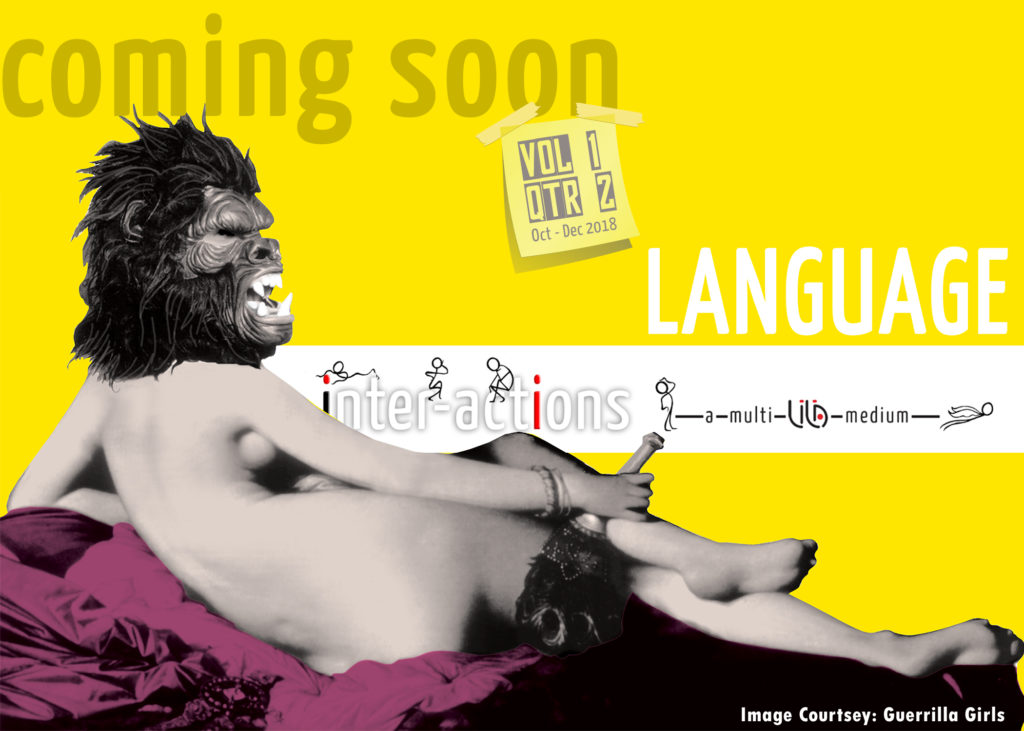When your body ceases to be a gift, and when without a warning, without prior notice, it is poisoned and cast aside, you learn unawares, the politics of the body, its various meanings, its potential, its loss. A reality, which many peaceful villages in the district of Kasaragod in the southern Indian state of Kerala have learnt in the last 50 years.
In 1975, the plantation corporation began its operations in Kasaragod, planting cashew saplings on 5000 hectares of government land in the Western Ghats. A welcome development, and apparently innocuous activity, though hundreds of acres of biodiverse vegetation was destroyed in the process. A few years later when the yield fell short, pesticides as deadly as Endosulfan were sprayed, first on the ground and then aerially, all caution was thrown to the winds. And, countless water bodies in the region, streams, mountain springs and 11 rivers were left uncovered during the spraying carried out at odd hours and often when the wind was strong thus making the pesticide residue to spread far and wide.
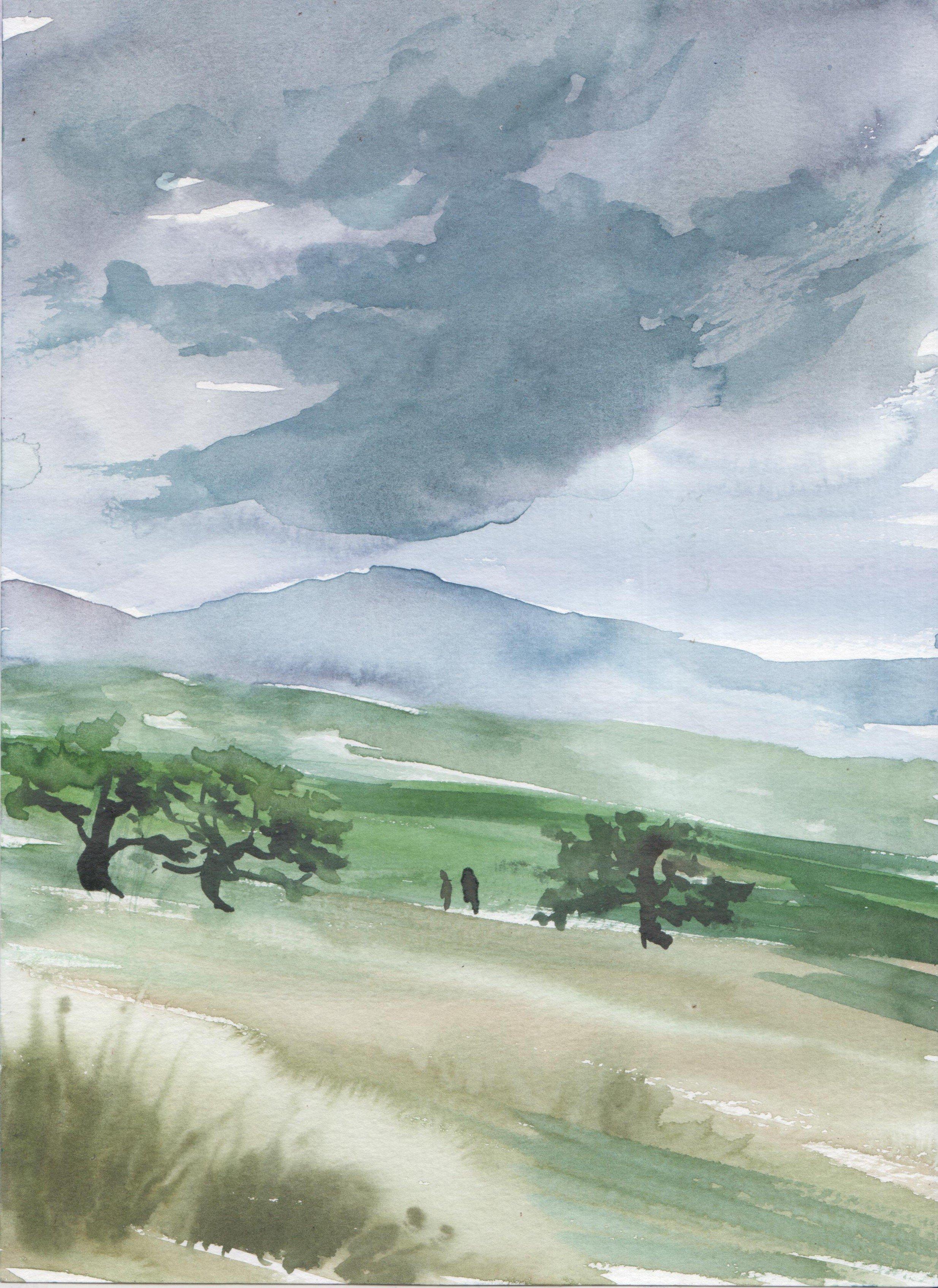
I walk, but in my solitude
Bow to the wind that buffets me.
Vikram Seth
Painting: Water colour by Zahira Rahman
The villagers were clueless about the tragedy that would befall them. They were in fact excited about the cheapest and ‘comparatively harmless’ pesticide recommended to them by the Department of Agriculture towards saving their crops and getting rid of the persistent pest, the tea mosquito. Even the educated among them, such as Kumaran Master, failed to see the terrifying consequences – generations of people dying and diseased.
When we went to meet Kumaran Master, he was wasting away. His cancer-ridden body was weak and frail, yet he vehemently asserted that it was the Endosulfan he sprayed for 10 years that brought him to this pass. So many bodies have suffered violation, and everyone, old or young, infant or foetus, man or woman, has a tale to tell. Here, one has to attend to one’s baby girl with a deformed urinary tract slowly dying in your arms, but also has to work for a living. Children are born without limbs or dysfunctional internal organs or warring brains. Parents live in trauma, blaming it upon themselves, unable to use logic. When every pregnant mother curses her womb, objectivity seems impossible.

Though in another tree—
She looks down just as often
And just as tenderly
Emily Dickinson
Painting: Water colour by Zahira Rahman
The effects of Endosulfan use in Kasaragod began appearing only gradually. Sree Padre, an environmentalist, brought this to the attention of the media when he published an article on a three-legged calf born in his neighbourhood. He found a correlation between the pesticide spraying and these aberrant births. Around the same time, Dr.Y.S. Mohan Kumar, a doctor practicing in the village, made a survey among his patients and was shocked to find a very high incidence of cancer among them. He published his survey report in the IMA journal implicating Endosulfan. A most significant turn of event occurred when an employee of the Department of Agriculture, Ms. Leelakumari Amma, filed a case against her own department condemning the indiscriminate use of Endosulfan.
Though there were instances of resistance like the above, the bodies of humans inhabiting the neighborhood of these cashew plantations were a site of emptiness, a non-issue for the profit-mongering pesticide manufacturers.
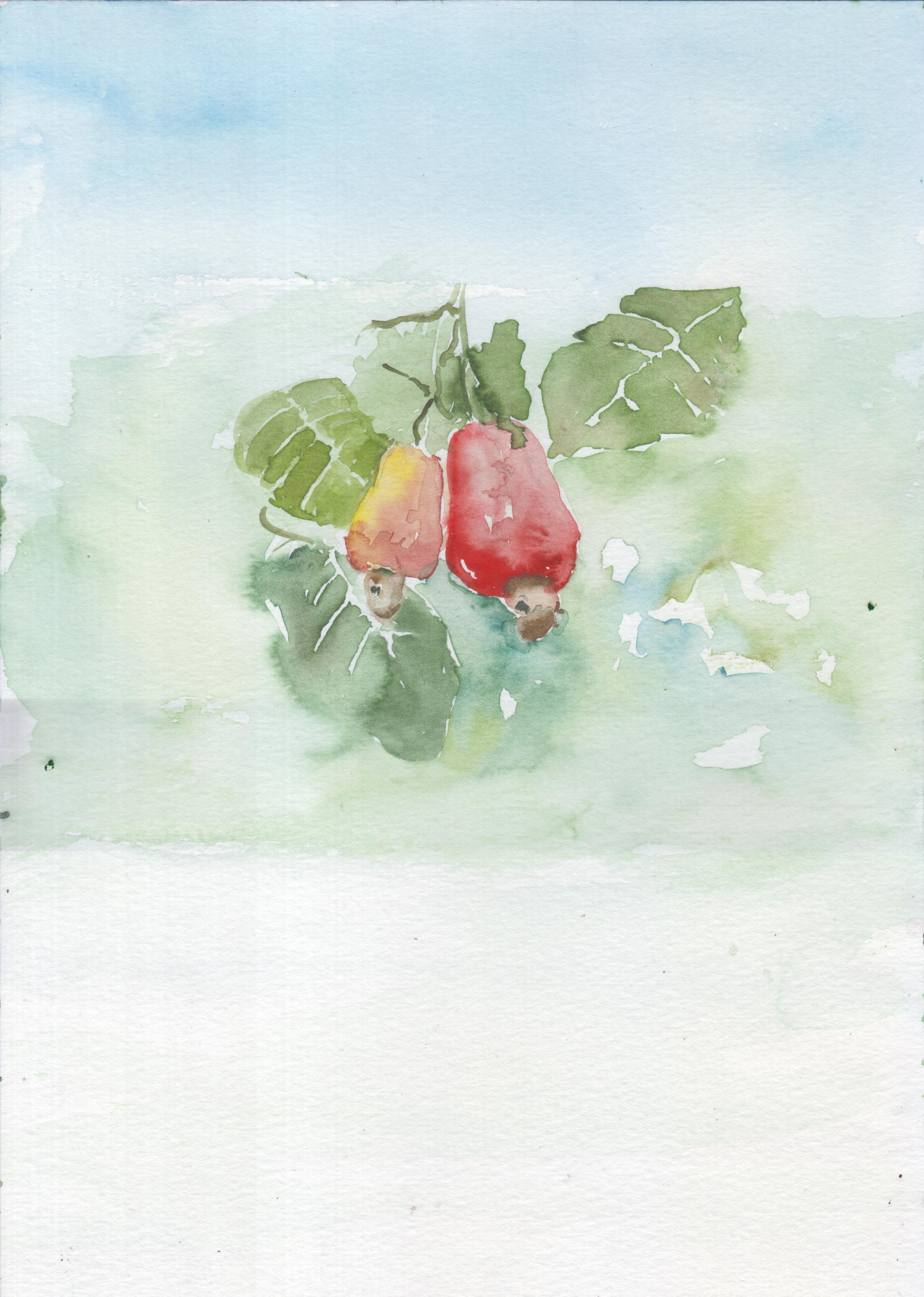
they were delicious
so sweet
and so cold.
William Carlos Williams
Painting: Water colour by Zahira Rahman
For 22 years in a row, the aerial spraying of this deadly poison on the unsuspecting villagers of the 11 panchayats around the cashew plantation was done indiscriminately and unscrupulously. It was sprayed over pristine landscapes inhabited by people farming and breeding livestock. Then, suddenly, one finds life poisoned and blown out, as in a fell swoop. It was doubly unfortunate that these bodies were disfigured, diseased, disused and finally, rendered invisible. Consequently, the will and means to resist were snatched away from them. The fact that the villages were spread around intractable areas of land and it was not easy for them to congregate and raise issues, led to the tragedy remaining more or less hidden from the larger public view for many years.
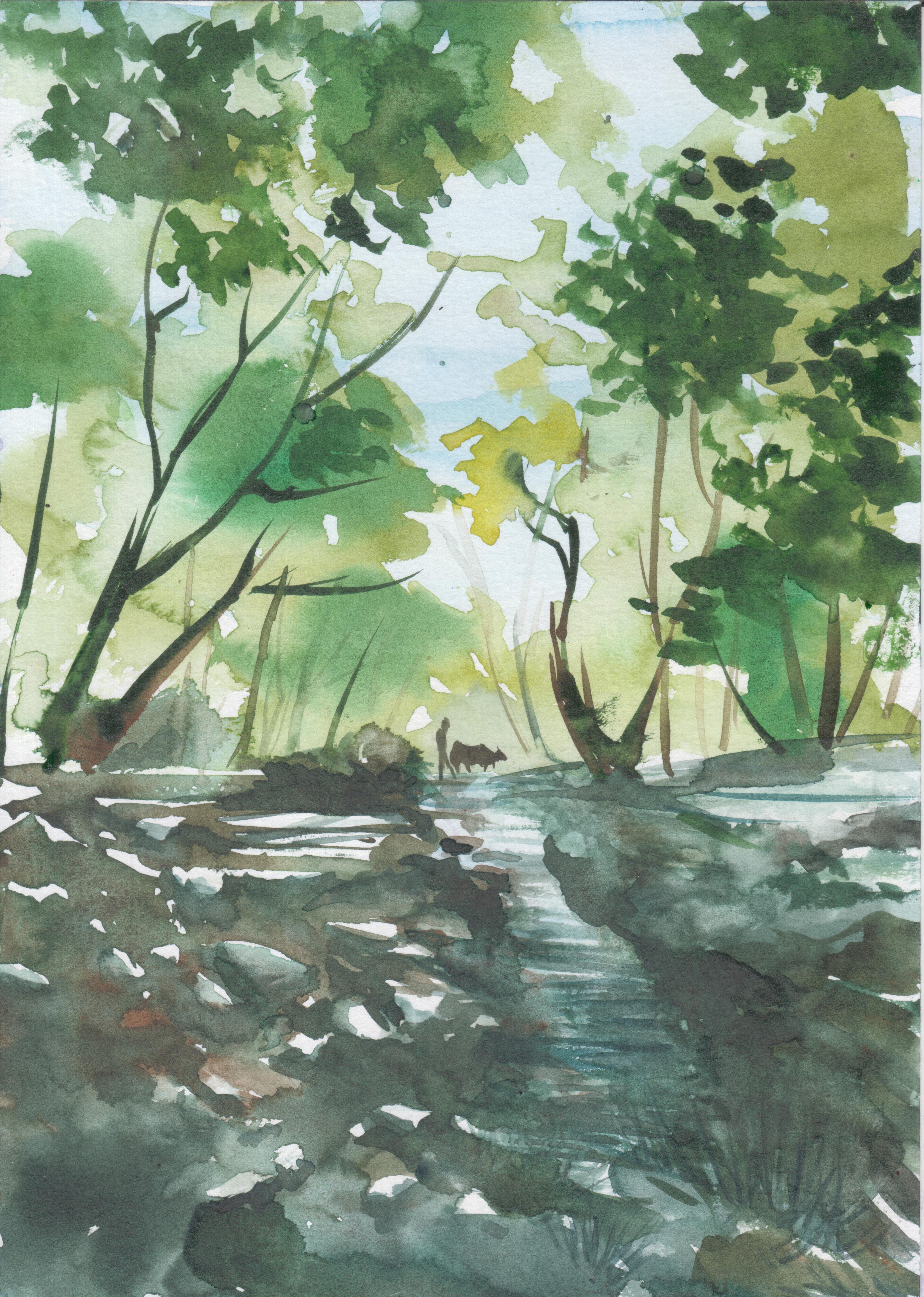
Were not the one dead, turned to their affairs.
Robert Frost
Painting: Water colour by Zahira Rahman
However, the images eventually did slip into public view. With the intervention of the National Human Rights Commission (NHRC), an epidemiological study was conducted by the National Institute of Occupational Health (NIOH) that found Endosulfan accountable for endocrine disruption in living beings. The report was published in 2002.
The HIL (Hindustan Insecticides Ltd.), a central government enterprise and the chief manufacturers of Endosulfan, is a major exporter of the pesticide. Hence, banning the pesticide would put any government in a double bind. So, in all international forums, the government spokespersons stood against the banning of the pesticide.
In 2011, at the Stockholm POP Convention, following the concerted interventions by some scientists, informed groups among the campaigners against the pesticide, and a few committed politicians, Endosulfan was internationally banned. The Convention approved the recommendation for elimination of production and use of Endosulfan and its isomers worldwide, subject to certain exemptions.
Public outrage, legal intervention and government compensation followed. Unfortunately, when financial aid due to the victims was distributed, their bodies began to be transformed into commodities. These violated bodies were once again invaded and turned into exhibits, pawns in the name of ‘justice for the victims’. ‘Environmentalists and NGOs who were until then strangers to the scene, flocked to the victims’ side.
Making bodies visible is sometimes seen as a political act in the interest of those bodies which have suffered violence. But, with invalids, the sick and the dying, such making-visible, and moving them to sites where they can be watched, offering them as symbols of tragedy is doubly unfair: a needless violence. The humiliation suffered may be concealed behind pasted smiles, yet the moving and shifting of these pain-ridden bodies is visible, obvious to all those who witness it. Nevertheless, it continues, in the name of seeking some elusive justice, and the body yet again becomes the source and target of violence at once.
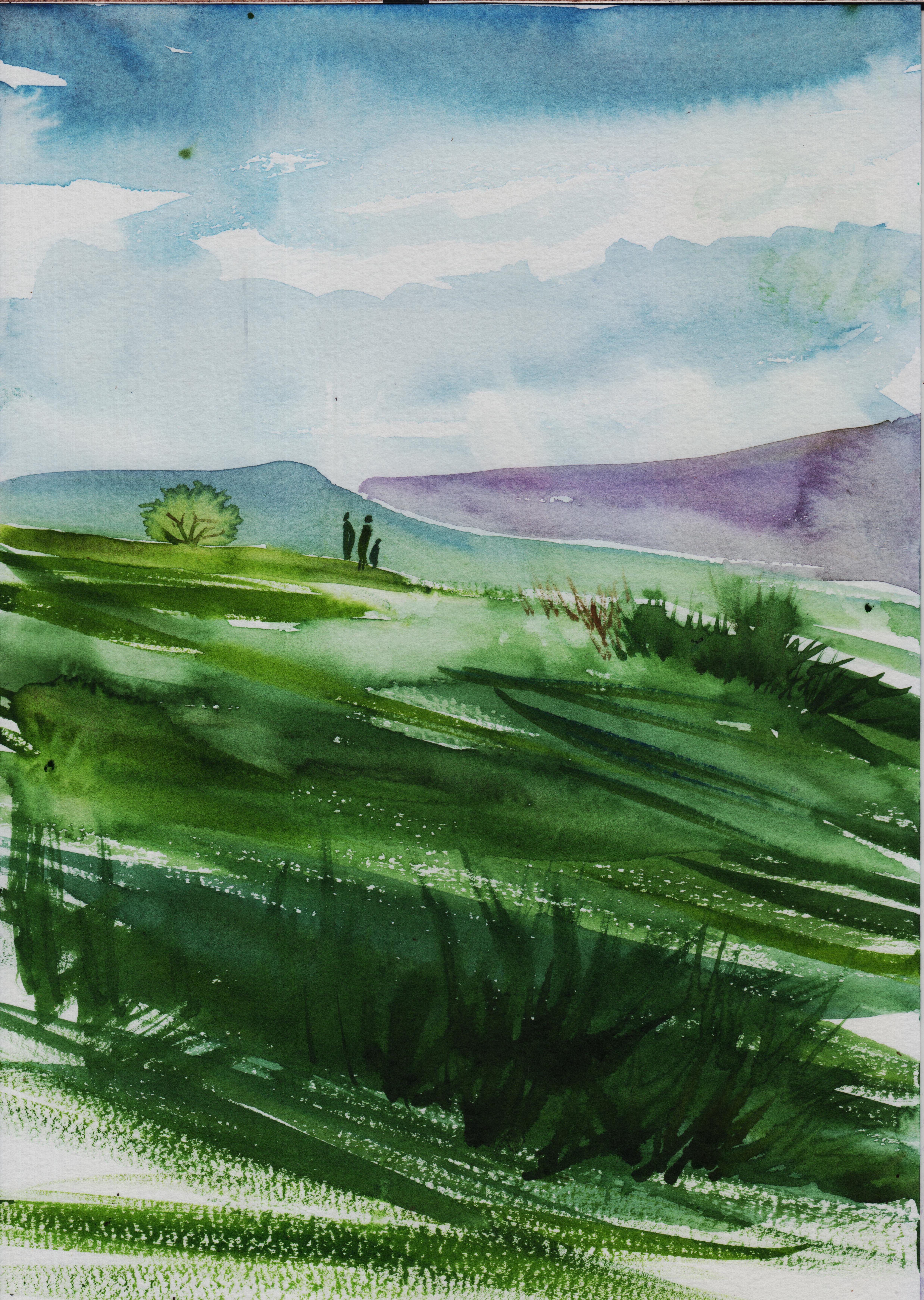
stammer becomes their mother-tongue:
just as it is with us now.
K Satchidanandan
Painting: Water colour by Zahira Rahman
Often law is not justice. Yet justice for these villagers that have endured injustices for so long can only be pursued through legal action. The setting up of a tribunal as per the NHRC directive was sabotaged by these agitating groups. Temporary treaties with the government which were signed to ensure sustainable compensation through a tribunal have been ridden over. Moreover, Human Rights directives to provide centralised palliative care to the villagers affected by Endosulfan have not been taken up by the central government. The agitations continue unfocussed, namesake.
The body is once again a suffering image, unreal and non-existent for the agitators who represent them. But, actually, life goes on in these bodies that struggle, endure, think, talk and sometimes, inspite of them, win the gift of hope. Bodies, misshapen in a tiresomely perfected world, continue to amaze, with their genius. Mathematics, philosophy, medicine, music, art, tales, dance and engineering come so mysteriously and magically to the young who were born into a poisoned land. Theirs is a story of a battered life wrenched from the claws of remorseless death-traders, to shape anew an incredibly beautiful form of being.
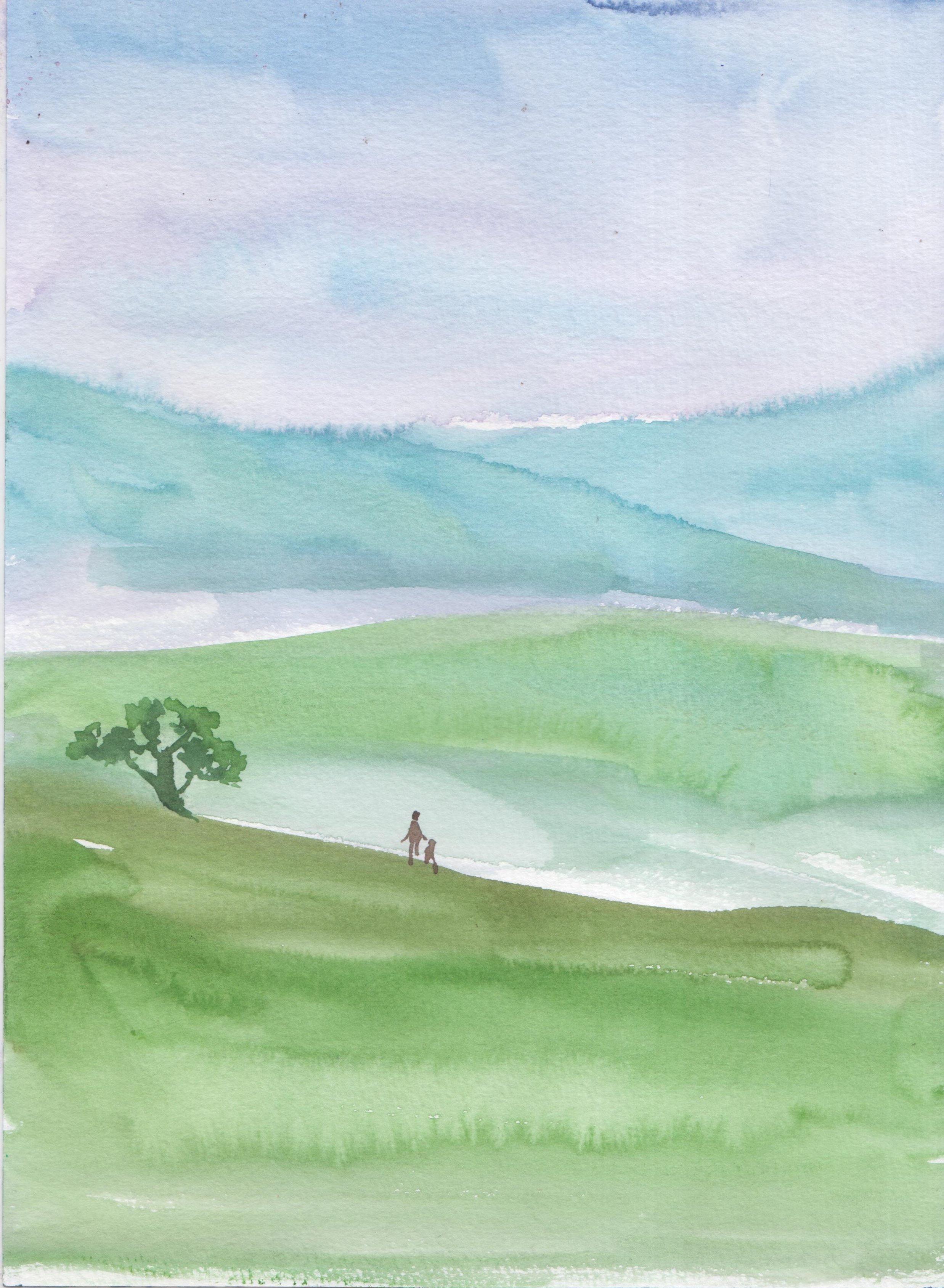
You may cut me with your eyes,
You may kill me with your hatefulness,
But still, like air, I’ll rise.
Maya Angelou
Painting: Water colour by Zahira Rahman
